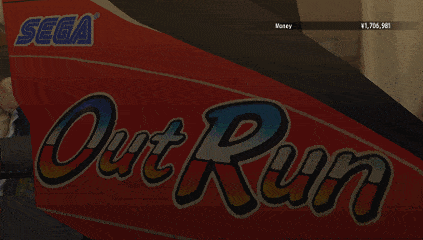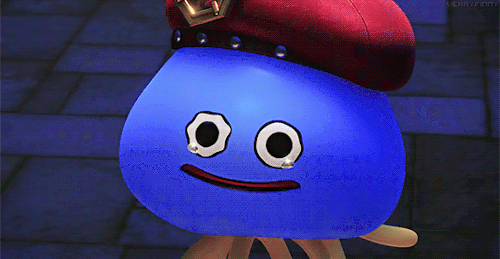Bullet Club
Banned
How Out Run changed video games forever
Out Run hit arcades 35 years ago this month. Its influence is still being felt on consoles, in music, and in movies
There was a time, before Out Run was released in September 1986, when video games were yet to discover the joy of just driving. Back then, the reference point for driving games was Pole Position, which came out in 1982 with a host of innovations: colourful pseudo-3D graphics instead of a top down view, a qualifying lap and a track based on a real circuit, a fully seated cabinet with a steering wheel and a gear shift. It was competitive and unforgiving: if you hit another driver or a roadside obstacle, your F1 car would immediately explode.
Out Run was nothing like that. It was laid back and casual, offering a leisurely drive more than a race. It had blue skies and stunning scenery and a convertible Ferrari. It was welcoming, rather than challenging. “Unlike rigid racing games, I was able to create a new genre of driving game where you would drive one-handed with a beautiful girl by your side, listening to the car stereo while leaving the competition in the dust,” explains Yu Suzuki, the legendary game designer behind Out Run and a host of other influential games including After Burner, Virtua Fighter and Shenmue.
Suzuki is an eccentric game developer, even by Japanese standards. He wanted to fit an actual combustion engine in the chassis of his previous game, the motorbike racer Hang On, so that players would get realistic sounds and vibrations while riding the replica GP500 bike that served as its controls (he had to settle with a subwoofer instead). He isn’t really a gamer, but he loves fast cars and the Burt Reynolds movie The Cannonball Run, which was his inspiration for Out Run: “I thought it would be fun to present in a game the simple, straightforward satisfaction of barreling towards the goal line in a super car,” he says.
For inspiration, he wanted to tour the US along the same cross-country route as the movie, but heard it would be “nothing but a changeless backdrop of desert,” and switched to Europe instead, expecting more variety. So he flew to Frankfurt and rented a BMW 520i: “A Ferrari was going to be too expensive and a Porsche wouldn’t hold all the luggage, so we went with a BMW. It had a sunroof, I could mount a camera on top, and I got it up to around 120mph on the Autobahn.” Over the course of two weeks in 1985, Suzuki visited Germany, Switzerland, Italy, France, and Spain. “I was impressed by the scenery of the Côte d'Azur, along the Mediterranean Sea, and the kind people who gave us directions when we got lost,” he says.
Scouting real world locations is standard practice today, but it was almost unheard of at a time when games simply didn’t have enough graphical complexity to justify it. As a result, Out Run’s 15 stages offer a quirky, quintessentially Japanese distillation of European geography, gently introduced by the seaside freeway that opens the game — Suzuki’s favourite stage.
In arcades, Out Run topped everything else in popularity and “wow” factor for years. The deluxe cabinet version – seven feet long and weighing 770 pounds – had a hydraulic-powered seat, and its vigorous shaking during crashes was thrilling enough that first-time players were eager to make a mistake just to experience it. It felt almost like a ride, except it simulated reality. “I remember playing racing and driving games as a kid, imagining what real driving would be like – but when I got my licence and started driving, it was nothing like those games,” says Michael Thomasson, a video game historian and former owner of the world’s largest video game collection. “Then Out Run came out. It was supposed to be fun and fast, but it was the first racing game that had hills and some depth to it, as well as trees and other objects that blocked your view of the road. To me, it felt like the first game in which I was really driving a vehicle.”

To create that impression, Suzuki built a driving model based on actual parameters such as torque, horsepower and tyre grip, which made for satisfying controls that were never frustrating. For the graphics, he used a technology called Super Scaler, which could rotate and enlarge 2D images called sprites to give the scene a 3D effect, by making objects such as the road or trees come at the player very fast. “It’s a really neat technique,” says James Newman, a professor of digital media at Bath Spa University. “Out Run wasn’t the first game to have it: Suzuki had used it previously in Hang On. But the number of elements in Out Run is much higher, creating a world that is fuller and more detailed. And the smooth scaling creates a real sense of speed, of stuff racing past you. Sega’s arcade hardware at the time was leaps and bounds ahead of the competition, and Out Run is the technical and artistic pinnacle of sprite scaling technology.”
The visual feast is accompanied by a soundtrack so good that it took on a life of its own and spawned an entire sub-genre of electronic music, aptly called “OutRun.” The three main tracks – ‘Splash Wave’, ‘Passing Breeze’ and ‘Magical Sound Shower’ – have been endlessly remixed, reissued and reimagined through every instrument and musical style. They were written by Hiroshi ‘Hiro’ Yamaguchi, whose collaboration with Suzuki had started with Hang On. “I composed the music based on the idea of what I wanted to listen to while driving, and I'm very happy that my fans liked it so much and still arrange, play, and listen to it,” he says.
The music is so important that it’s actually the first thing the player encounters, and can be selected via the radio that appears after pressing Start. “I came up with the idea of making the song selection at the start of the game into a radio,” says Yamaguchi. “I figured that if we were going to select songs in the car, the radio would be a good match. There was also a plan to show cassette tapes, which were the mainstream at the time, but it was rejected because of the amount of data it would take to design. Instead, we created a stylish interface where the arm that turns the radio dial is shown on the screen, and the music can be selected without displaying obtrusive text.” Yamaguchi also suggested to place two speakers in the headrest of the deluxe cabinet, so that players could listen to the music even in a noisy arcade.
The peak of the game’s musical influence is perhaps the 2011 movie Drive, whose opening credits feature a track by French electronic musician Kavinsky, from his tellingly titled debut album Out Run. The movie as a whole is a prominent example of an aesthetic known as outrun or retrowave, which the r/outrun subreddit describes as “the retrofuturist 80s aesthetic of fast cars, neon lights and chrome.”
For all its merits, the game also speaks, inevitably, to how much the world has changed in 35 years: “Out Run is the quintessence of the 1980s: fresh, easy going, over the top,” says Matteo Bittanti, a professor of game design at IULM University in Milan. “It's also politically questionable and eco-unfriendly: the woman is depicted as a trophy for the male ego, a passive and objectified passenger. And climate change is not an issue: you drive an outrageous gas guzzler, but there are no gas stations and your impact on the environment is nonexistent, or rather, not quantified.”
Astonishingly, that outrageous gas guzzler – a red, convertible Ferrari Testarossa – was not officially licensed from Ferrari itself. For a game that went on to sell 30,000 units in arcades worldwide and then millions of copies in home conversions, that was puzzling. Suzuki and Sega decline to comment on this, but theories abound about what happened. “They thought about licensing it, and Ferrari did contact them and grumbled about it – but they never took any legal action,” says Thomasson. According to Newman, Sega paid a settlement fee to avoid litigation: “However, there have been subsequent Out Run games with a Ferrari license — one of the things that makes some of those games now impossible to play, because the licence has expired.” The original Out Run, on the other hand, has had many reissues, the latest on the Nintendo Switch, albeit with a modified Testarossa that looks more like a generic supercar.
Perhaps Out Run felt so different from previous driving games because Yu Suzuki is not really a gamer. “I’ve never played games much. What I like to do is recreate the interesting parts of real life in games,” he says. His off-piste approach created an instant classic that defined the arcade racing game and influenced game design for decades; its legacy can be found in series such as Test Drive, Need for Speed, Gran Turismo and Project Gotham Racing, all the way to current titles such as the Xbox’s Forza Horizon.
Letting players pick the music via the radio has become commonplace in video games – it’s a big part of the fun in GTA V – and gave the impression of a personalised experience, further cemented by the forks in the road. “Out Run is a game about choice, and showing you your route at the end was ingenious, as if to say, you've only seen part of this but you can put another coin in and see more,” says Newman. It’s still a pleasure to play — if nothing else just to check out all of the amusing ending sequences that play out once each final stage is completed.
Out Run’s true ending, however, is the sunset that backdrops the high score screen, when the game’s most soulful tune – ‘The Last Wave’ – plays in the background. It has the same bittersweet feel as the end of a glorious summer. The difference is, you can always pop in another coin and start all over again.
Source: Wired









